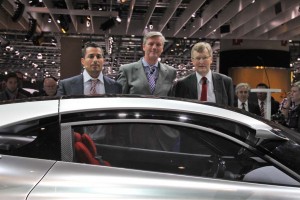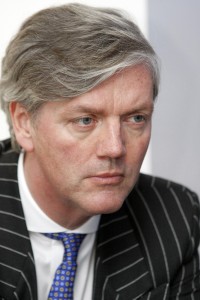Saab’s CEO Jan-Aake Jonsson will step down, in May, leaving the Swedish maker to find a new chief executive amidst its efforts to turn its fortunes around.
Victor Muller, the Dutch entrepreneur who led the takeover of Saab from former owner General Motors Corp., will temporarily take on CEO duties while a search gets underway to replace the 60-year-old Jonsson, who had been with Saab for 40 years.
During a conference call with reporters, Saab’s new parent, Amsterdam-based Spyker Cars NV, announced that its struggling subsidiary lost 218 million Euros, or $308 million, during 2010. But that’s down from a 400 million Euro loss in 2009, while Saab was still owned by General Motors.
Saab sales declined about 19%, however, from 1 billion Euros during the last year under GM to 819 million Euros under Spyker’s command.
But that reflects the challenges the new owners faced after taking control. Before approving the Spyker bid GM had begun ramping down operations at the Swedish company and it took nearly two months, after the sale, for Saab’s assembly plant in Trollhatten to restart.
Critically, the company says sales started rebounding during the fourth quarter, when global volumes hit 10,000. The maker insists the trend is moving favorably and should continue to gain momentum with the May launch of Saab’s new 9-4X, its first sport-utility vehicle.

Saab design chief Jason Castriota shown with Chairman Victor Muller and outgoing CEO Jon-Ake Jonsson during the Geneva Motor Show.
That will be followed by the replacement of the maker’s traditional bread-and-butter model, the compact 9-3. That model will introduce an all-new platform, the first developed independently of GM, that will also serve as the foundation of future replacements for the flagship 9-5 sedan and 9-4X, both currently bad on GM-derived platforms.
(The next Saab 9-3 will feature a new hybrid-based all-wheel-drive system that is expected to improve performance, mileage and handling, TheDetroitBureau.com reports. Click Here for that story.)
Muller, who has also been serving as Saab Chairman, declined to discuss current sales trends, though he indicated his belief that the Swedish maker will be profitable in 2012. He said he was less worried about hard sales numbers, suggesting, “I’d rather sell 50,000 cars and make a profit,” than push for higher volumes at a loss.
In fact, the Dutch executive has said, on a number of occasions, that he anticipates Saab can achieve profitability at sales volumes of just 80,000 units, a significantly lower figure than what GM had generally achieved – though at a loss.
To help boost demand, Saab also announced it has inked distribution deals that will give it a presence in two key emerging markets, China and Russia. The former nation is now the world’s largest automotive market, and outgoing Saab CEO Jonsson said, “We see strong sales potential in what is now the largest car market in the world and we believe our cars will appeal to Chinese customers.”
But in a background conversation, earlier this week, a senior Saab official cautioned that the sales potential in China could be limited because of the hefty duties imported automobiles are saddled with. There is no indication Saab or its new partner, China Automobile Trading Co., have any plans for producing vehicles in that market – though in past conversations Muller has not ruled out such an option.
Saab, which employs 4,000 worldwide, currently has 217 million Euros remaining from a 400 million Euro loan provided by the European Investment Bank that helped it close the deal with GM. The maker says it is seeking ways to cut costs and find additional cash.
Muller recently authorized the sale of the Dutch sports car company he founded, Spyker Cars, to an original partner, the Russian businessman Vladimir Antonov. The parent company, now focusing on Saab alone, plans to change its name later this year.
The upcoming departure of Jonsson reflects the challenges the executive has been facing, he said during the conference call with reporters. “The last three years were very intense, I spent almost all my time focusing on work. It’s put a lot of strain on myself as an individual. We all get older and get new perspectives and priorities.”
Earlier this year, Saab also shook up its U.S. management team, ousting Mike Colleran, a former GM executive, as its American chief executive. Muller acknowledged to TheDetroitBureau.com that he wasn’t satisfied with the pace of sales growth in the States and felt he needed a management change. He was replaced by Matthias Seidl, who had previously served in the U.S. in a senior management role with Volkswagen.

